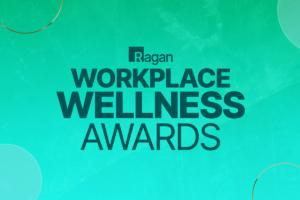The war for frontline talent
With national unemployment levels still at historic lows, the job market remains tight for companies in industries with frontline workers, such as manufacturing, retail and hospitality.

Today, tech and crypto layoffs dominate the headlines, but several other industries face a different employment-related threat: attracting and retaining top talent.
With national unemployment levels still at historic lows, the job market remains tight for companies in industries with frontline workers, such as manufacturing, retail and hospitality. Consequently, these industries still face significant challenges in hiring and retaining employees to meet various fast-changing marketplace needs.
To better understand this phenomenon, we recently interviewed more than two dozen senior executives in the HR and communications departments at large companies to explore how they’re navigating the tight labor market and using employee experiences as a competitive weapon in the war on talent.
Below is a breakdown of the most critical insights from the research.
[RELATED: Join us Aug. 14-16 in Denver for our Workplace Wellness Conference]
Speed in the recruiting process
When recruiting frontline workers, the early bird gets the worm. The Wall Street Journal recently reported that employers are reducing steps in the hiring process, including eliminating interviews to attract applicants quickly and effectively. Professionals in retail and hospitality echoed this sentiment. One senior-level HR executive said, “We can’t just be foolish to think that we’re the only game in town … if you don’t catch them at the moment, somebody else is going to, and you find yourself in a wage battle.”
Maintaining a re-recruiting mindset
The recruiting process should continue once the individual transitions from recruit to employee, where re-recruiting comes into play. Re-recruiting efforts should remind employees why they signed on for the role in the first place. The key to re-recruiting is knowing when and how to re-engage with new hires and longer-term employees. Distinct communications programming and support around the employee value proposition — focusing on why people work at the company and what makes it unique — can provide foundational support. Experimenting with re-recruiting efforts, potentially funneling some of your existing talent acquisition budget into re-engagement and recognition programs for newly hired employees, is a worthy investment.
Elevating the role of people managers
Most people quit their boss, not their company. With this in mind, companies must train and arm people leaders with the tools and skills to manage people with precision and empathy. Managers need to provide direct and detailed information regarding the state of the business and employee compensation and benefits — reinforcing a transparent and trusting culture. Management training and leadership education programs must focus on the critical communications skills necessary to create sufficient engagement, alignment and understanding.
AI and automation
Companies should leverage AI and automation to create a consistent experience and maintain an ongoing dialogue with candidates, enabling prospects to interact with what feels and sounds like a recruiter to answer their questions anytime. This recruiting experience can and should translate into the employee experience, where candidates can engage on their schedule and raise other questions during their work experience. Human Resources, IT and communications teams must be in lockstep to build and deploy technology that makes a material difference in the recruiting and employee experience.
No one puts employee experience in the corner.
The executives we spoke to clearly stated that employee experience no longer takes a back seat to customer experience. Today, these executives are implementing listening programs, surveys, and thorough analyses of existing data sets to understand your employees’ desired experience, and if the information does not yet exist, they are using this as an opportunity to build systems that capture meaningful data. The end result is employees who feel valued and have a better understanding of the service and experience.
Frontline workers are the engine of the global economy and demand (and deserve) the best possible experiences to excel at their jobs. While they remain in high demand, companies must prioritize their needs and create experiences that keep them engaged, productive and happy. Doing so will result in higher employee morale, increased retention rates and better customer service.
You can read the full report here.






